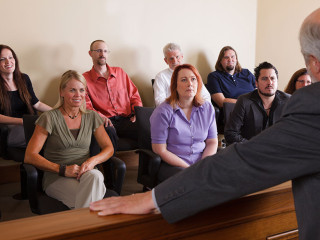This summary judgement motion concerned issues of witness credibility and the evidentiary requirements of proving entitlement to the OPCF-44R Family Protection Endorsement
Released December 12, 2016 | Full Decision [CanLII]
This summary judgement motion was brought by the defendant State Farm Mutual Automobile Insurance Company (“State Farm”), seeking a dismissal of the plaintiffs’ action for damages arising out of a motor vehicle accident. The accident in question occurred in the early morning on October 16, 2011. The plaintiffs alleged they were driving on Highway 403 when they were cut off by an unidentified driver and vehicle, which suddenly changed course in front of them, causing the driver of their car, Mr. Anjum, to lose control and drive into a ditch. State Farm alleged there was no unidentified driver and the accident was caused by the sole negligence of Mr. Anjum.
Citing the Supreme Court of Canada’s decision in Hryniak v. Maudlin, [2014] 1 S.C.R. 87, which stands for the need to “…create an environment promoting timely and affordable access to the civil justice system,” Cavanagh J. felt that deciding the issue of liability in a summary judgement motion could ultimately enable the parties to resolve issues relating to damages and avoid a lengthy trial.
There were two issues for determination: (i) whether an unidentified vehicle caused or contributed to the accident, and (ii) whether Mr. Anjum satisfied the evidentiary requirements of the OPCF-44R Family Protection Endorsement of his automobile policy. After a summary judgement motion which included affidavit and viva voce evidence from lay and expert witnesses (including forensic engineers and human factors experts on both sides), the plaintiffs were successful in discharging their burden in both issues.
Issue I: Whether an Unidentified Caused or Contributed to the Accident
State Farm lead evidence from clinical notes and records, police documents (including a Motor Vehicle Accident Report) and a police officer, suggesting Mr. Anjum had not mentioned the presence of another vehicle when describing the accident. Importantly, when interviewed by police in the hospital, Mr. Anjum explained, “I brake and turn left.”
The plaintiffs’ leading witness was Ms. Rossi, a front-seat passenger in a car trailing the accident. Ms. Rossi witnessed the accident and called 911 to report it. Ms. Rossi was on her way home from a nightclub. She was intoxicated and her seat was reclined but she testified that her vision was not limited. She did not tell the 911 operator that another car was involved, explaining “they didn’t ask” her and she was concerned about getting emergency help for Mr. Anjum. In a phone conversation with counsel for State Farm shortly after the accident, she said she did not remember the accident. Only after that conversation, she testified, did she return to the scene of the accident, listen to the 911 recording, and remember what happened. Her evidence at the motion was consistent with the plaintiffs’ explanation of the accident. The decision ultimately turned on Ms. Rossi’s credibility and Cavanagh J. held she was credible.
Cavanagh J. cited Faryana v. Chorny, [1952] 2 D.L.R. 354 in explaining a judge’s approach to the question of witness credibility:
…[T]he real test of the truth of the story of a witness… must be its harmony with the preponderance of probabilities which a practical and informed person would readily recognize as reasonable in that place and in those conditions… And a court of appeal must be satisfied that the trial judge’s finding of credibility is based not on one element only to the exclusion of others, but is based on all the elements by which it can be tested in the particular case.
With respect to the fact that Ms. Rossi did not tell the 911 operator another car was involved in the accident, Cavanagh J. accepted her explanation that her utmost concern was getting help for Mr. Anjum. Other reasons for accepting her as a credible witness included the fact that she had no motive to fabricate a false description of the accident and she was not too intoxicated to see the accident. Cavanagh J. also accepted Ms. Rossi’s explanation regarding the re-emergence of her memory. She said she returned to the scene of the accident, looked at Google Maps and listened to the 911 recording and this was enough to jog her memory sufficiently.
Issue II: Whether the Evidentiary Requirements of the OPCF-44R Family Protection Endorsement were Satisfied
Section 3 of the OPCF-44R Family Protection Coverage endorsement requires an insurer to indemnify claimants for amounts they are legally entitled to recover from an inadequately insured motorist. Section 1.5(D) defines an “inadequately insured motorist” as the driver of an unidentified automobile, provided that the eligible claimant’s own evidence of the involvement of such automobile must be corroborated by “other material evidence,” meaning (i) an independent witness, or (ii) physical evidence indicating the involvement of an unidentified automobile.
Holding the plaintiffs satisfied their burden, Cavanagh J. wrote:
The burden of satisfying the evidentiary requirement for the Family Protection Coverage endorsement is, however, lower than the burden of proving negligence on the part of the driver of an unidentified vehicle. To satisfy this evidentiary requirement, absent corroborative evidence from an independent witness, the Plaintiffs need only tender physical evidence “indicating the involvement of an unidentified automobile”. Nevertheless, given my finding that the evidence of Ms. Rossi is credible and reliable, I do not find it necessary to decide whether the expert evidence tendered on behalf of the Plaintiffs is sufficient to satisfy the requirement for physical evidence indicating the involvement of an unidentified automobile.
Read the full decision on CanLII










